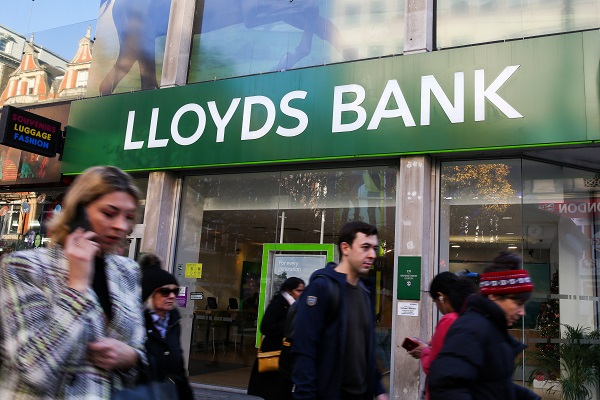Lloyds Bank dividend up 20% as profits impress
22nd February 2023 08:37
by Richard Hunter from interactive investor
The reporting season for UK bank sector results is now over, and Lloyds Bank has delivered a strong set of numbers and an attractive payout. Our head of markets explains what it all means.

Lloyds Banking Group (LSE:LLOY) has brought the curtain down on the bank sector reporting season in some style, exhibiting its traditional strengths of efficiency, profits and generous levels of shareholder returns.
At first glance, the pre-tax profit number of £6.93 billion is uninspiring, being largely flat against the previous year and in line with expectations. However, given a credit impairment of £1.5 billion which compares to a release of £1.4 billion the year previous, this negative £3 billion swing has effectively been nullified. Indeed, the underlying profit before impairment shows an increase of 46% to £9 billion.
- Invest with ii: Open a Stocks & Shares ISA | ISA Investment Ideas | Transfer a Stocks & Shares ISA
The rising interest rate environment is one which is usually positive for banks, as has been seen for most of its peers, and Lloyds is a particular beneficiary given its UK focus and business model. Net Interest Income rose by 49% over the period from £9.37 billion to £13.96 billion, while Net Interest Margin improved to 2.94% from 2.54%, and was bolstered by a fourth quarter number of 3.22%. This momentum is one which Lloyds plans to consolidate, with an outlook expectation of over 3.05% for the current year.
These factors helped overall net income to rise by 14% to £18 billion, compared to £15.76 billion and marginally above estimates. The continued strength of the Lloyds’ significant mortgage book was again in evidence, with loans overall rising by £6.3 billion to £455 billion for the period. At the margins, the Wealth business is also being targeted for expansion, with some promising early signs in its relatively new mass affluent business, which aims to deepen customer relationships.
At the same time, the move towards a more digital business will reap large rewards as the process evolves. The closure of office space and indeed branches is a reflection of the times as customer behaviour changes, and the bank saw a further hike of 8% in “digitally active users”, which now stands at 19.8 million.
- UK bank sector dividends: what to expect from the Big Five
- NatWest shares slump despite spectacular annual profit
The group has also retained its crown in terms of efficiency in the UK banking sector, with a cost/income ratio of 50.4%, a marked improvement from the previous year’s figure of 61%, and is targeting a number of under 50% by 2026. In terms of the other key metrics, a capital cushion of 14.1% showed a decline from the previous 16.3%, partly driven by regulatory changes, but well in excess of regulatory requirements. The Return on Tangible Equity was also a robust 13.5%, and one which the bank is aiming to roughly replicate this year. Meanwhile, further financial firepower was revealed by a Liquidity Coverage Ratio which rose from 135% to 144%.
Perhaps unsurprisingly, the strength of the performance has enabled further financial largesse to be bestowed on shareholders. An increase of 20% to the annual dividend - a final dividend of 1.6p means 2.4p for the full year - puts the projected yield at 4.7%, while a share buyback programme of £2 billion is further evidence of reward for investor patience.
The challenge now is for Lloyds to maintain the momentum, particularly from a set of fourth quarter numbers which lift expectations. The group’s own outlook comments are notably understated and conservative, and may be a nod to the challenging UK economic backdrop which remains very much in evidence.
Indeed, the tendency to tar Lloyds with the brush as a UK economy barometer may have impacted the share price performance. In line with each of its peers, the group has enjoyed a recent spike with the shares having risen by 12% over the last three months.
- Barclays disappoints amid significant headwinds
- 2023 Investment Outlook: stock tips, forecasts, predictions and tax changes
For Lloyds, however, the shares are flat over the last year, as compared to a gain of 6.5% for the wider FTSE100 index and investors will now need to decide whether the pace of change is enough to drive further measurable growth.
Reaction to these numbers is mixed in early trade and set against a weaker wider opening, but the market consensus of the shares as a 'buy' reflects some optimism that further efficiency, profitability and returns are all within reach.
These articles are provided for information purposes only. Occasionally, an opinion about whether to buy or sell a specific investment may be provided by third parties. The content is not intended to be a personal recommendation to buy or sell any financial instrument or product, or to adopt any investment strategy as it is not provided based on an assessment of your investing knowledge and experience, your financial situation or your investment objectives. The value of your investments, and the income derived from them, may go down as well as up. You may not get back all the money that you invest. The investments referred to in this article may not be suitable for all investors, and if in doubt, an investor should seek advice from a qualified investment adviser.
Full performance can be found on the company or index summary page on the interactive investor website. Simply click on the company's or index name highlighted in the article.